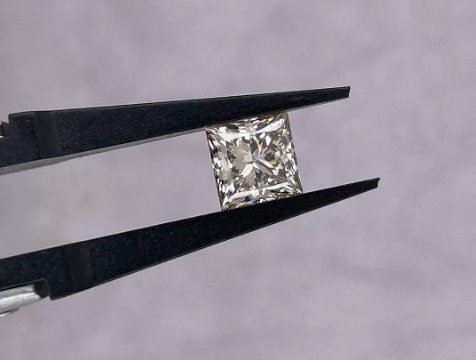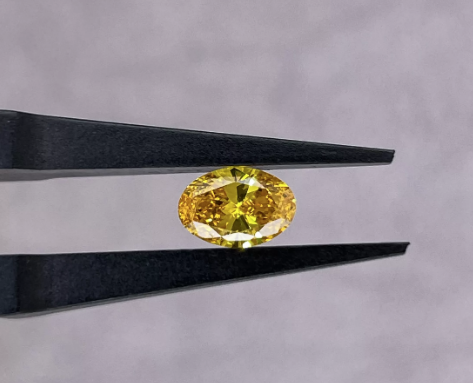Lab-grown diamonds have been making waves in the jewelry industry, offering consumers a sustainable and ethical alternative to natural diamonds. When it comes to choosing a lab-grown diamond, one of the most crucial factors to consider is the cut and shape. Just like natural diamonds, lab-grown diamonds come in a variety of cuts and shapes. In this comprehensive guide, we will explore the different aspects of lab-grown diamond cuts and shapes, helping you make an informed decision when selecting the perfect lab-grown diamond for your jewelry.
The Importance of Cut and Shape
The cut and shape of a diamond have a significant impact on its appearance, brilliance, and overall value. The way a diamond is cut determines how it interacts with light, affecting its sparkle and fire. Additionally, the choice of shape is a matter of personal preference, and it can greatly influence the aesthetics of a piece of jewelry.

Popular Diamond Shapes
Lab-grown diamonds come in a wide array of shapes, but some are more popular and traditional than others. Here are some of the classic diamond shapes:
1. Round Brilliant
The round brilliant cut is the most popular and classic choice for both natural and lab-grown diamonds. Its 58 facets maximize light reflection, making it the sparkliest of all cuts. If you're looking for a timeless and elegant option, the round brilliant is a safe bet.
2. Princess
The princess cut is a square or rectangular shape with pointed corners. It's known for its sharp angles and exceptional brilliance. This shape is a modern and trendy choice for engagement rings.
3. Emerald
The emerald cut is a rectangular shape with cut corners, creating a hall-of-mirrors effect. It's an excellent choice if you prefer a more understated and vintage look. Emerald-cut diamonds are prized for their elegance.
4. Oval
Oval-cut diamonds are a beautiful blend of the brilliance of a round cut and the uniqueness of an elongated shape. They can create an illusion of longer, more slender fingers when used in rings.
5. Pear
Pear-shaped diamonds are a combination of the round and marquise shapes, with a rounded end and a tapered point. They are known for their versatility and can be used in various jewelry styles.
6. Marquise
The marquise shape is an elongated oval with pointed ends. This shape can create an illusion of greater size due to its unique silhouette.
7. Cushion
Cushion-cut diamonds have rounded corners and larger facets that increase their brilliance. They offer a vintage and romantic look.
8. Asscher
The Asscher cut is similar to the emerald cut but square in shape. It's known for its step-cut facets and Art Deco appeal.
9. Radiant
Radiant-cut diamonds are typically square or rectangular with trimmed corners. They offer a balance between the elegance of emerald cuts and the brilliance of round cuts.
10. Heart
Heart-shaped diamonds are a symbol of love and romance. They are a unique choice and require a high level of craftsmanship to achieve a pleasing symmetry.

Factors to Consider When Choosing a Lab-Grown Diamond Cut and Shape
Selecting the ideal lab-grown diamond cut and shape involves considering several factors:
1. Personal Style
Your personal style and preferences play a crucial role in choosing the right cut and shape. Consider the design of the jewelry and whether you lean towards classic, modern, or vintage aesthetics.
2. Finger Shape
The shape of your fingers can influence your choice. For example, elongated shapes like marquise and oval can create the illusion of longer fingers, while round shapes are universally flattering.
3. Light Performance
Different cuts interact with light in unique ways. Round brilliant cuts offer exceptional brilliance, while step cuts like emerald and asscher may have a different sparkle. Evaluate which type of brilliance appeals to you the most.
4. Setting and Design
Consider the setting and design of the jewelry piece you're planning. Some shapes may work better with specific settings or design elements.
Lab-Grown Diamond Quality
Beyond the cut and shape, when purchasing a lab-grown diamond, it's essential to assess its quality based on the "Four Cs": Carat, Color, Clarity, and Cut. The cut grade will determine the diamond's brilliance and sparkle. Look for a diamond with an excellent or very good cut grade for optimal light performance.
Ethical and Sustainable Choice
One of the significant advantages of lab-grown diamonds is their ethical and sustainable nature. They are created in controlled environments with minimal environmental impact and without the ethical concerns associated with some natural diamond mining practices. Choosing a lab-grown diamond allows you to enjoy a beautiful gemstone with a clear conscience.
Conclusion
Selecting the right cut and shape for your lab-grown diamond is a personal decision, influenced by your style, budget, and the type of jewelry you're designing. The wide variety of options available ensures that you can find the perfect lab-grown diamond to suit your preferences. Additionally, by choosing a lab-grown diamond, you're not only getting a stunning gem but also making an ethical and sustainable choice that aligns with the values of responsible consumerism.



 Lab Grown Emerald
Lab Grown Emerald



